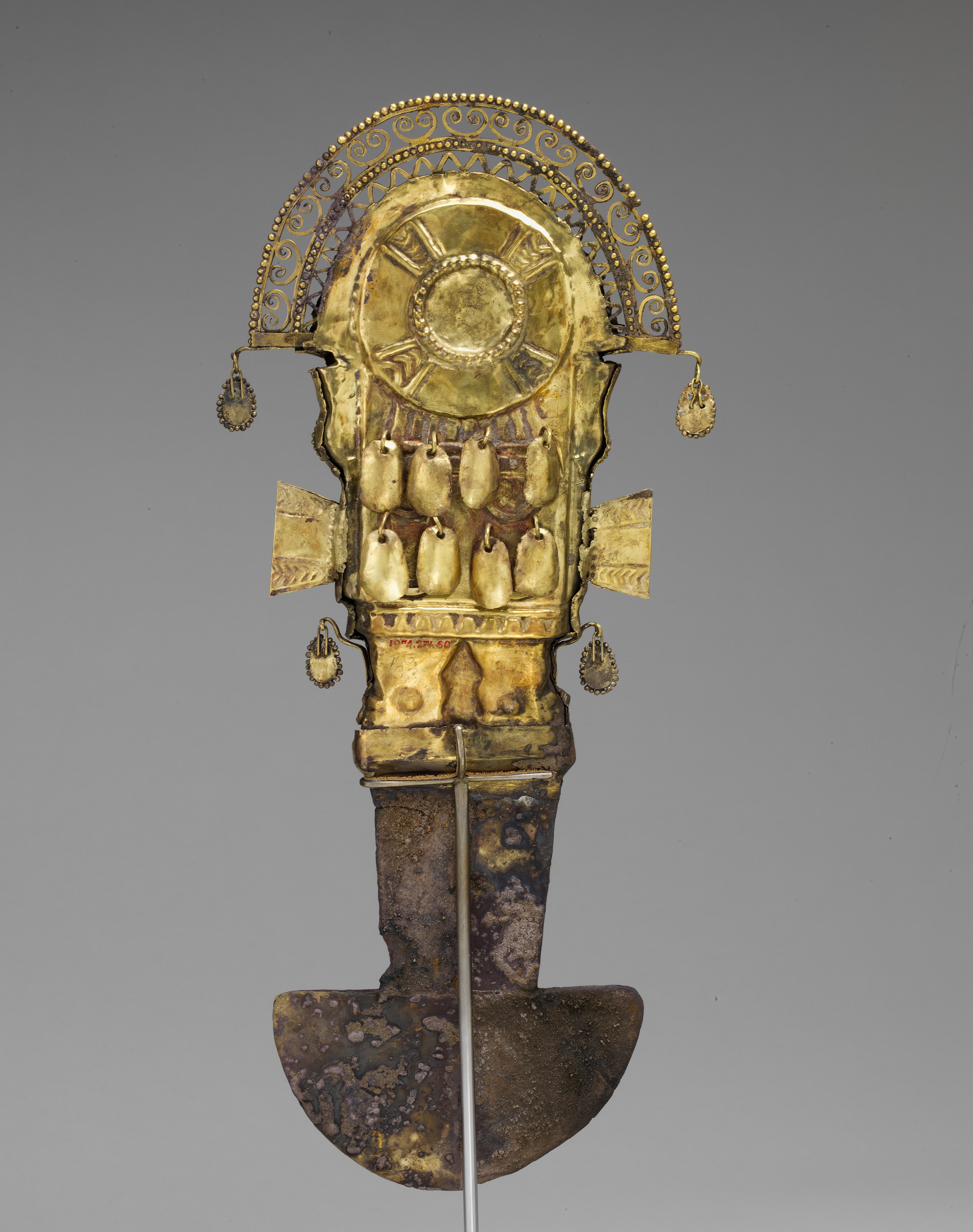Tumi (knife)
Not on view
Metallurgy was the primary medium for the expression of the power of Sicán rulers; vessels, headdresses, body adornments, funerary masks, and tumis were delicately made with gold, silver, and arsenical copper. Tumis are ceremonial knives with semicircular blades. Known on the Peruvian coast since the third century B.C., they often appear in Moche iconography, where they are used to cut the throat of sacrificial victims. Tumis were also recently found in situ in the tombs of high-status Moche and Sicán individuals. Sicán tumis such as this one were exquisitely crafted by skilled metallurgists mastering the techniques of repoussé, soldering, and filigree. Here, the handle is inlaid with turquoise and takes the shape of the Sicán Lord with characteristic crescent headdress, comma-shaped eyes, and pointed ears. The Sicán Lord is often interpreted as ñaymlap, the mythical founder of the Sicán dynasties, described in a sixteenth-century Spanish chronicle.
Due to rights restrictions, this image cannot be enlarged, viewed at full screen, or downloaded.
This artwork is meant to be viewed from right to left. Scroll left to view more.




